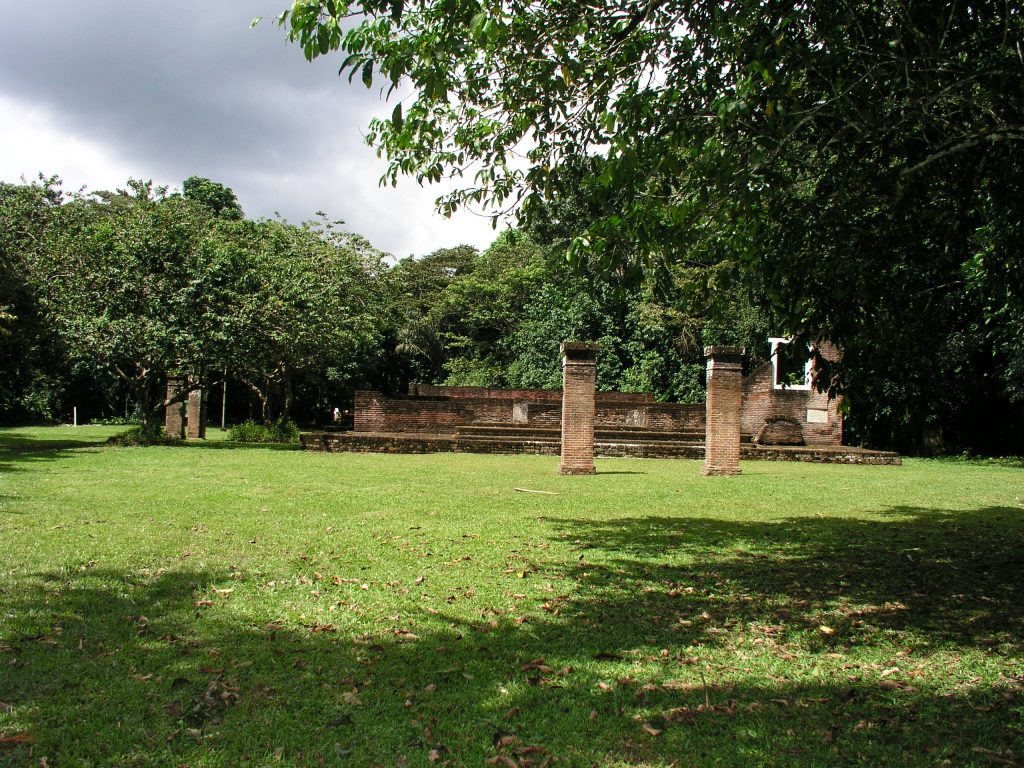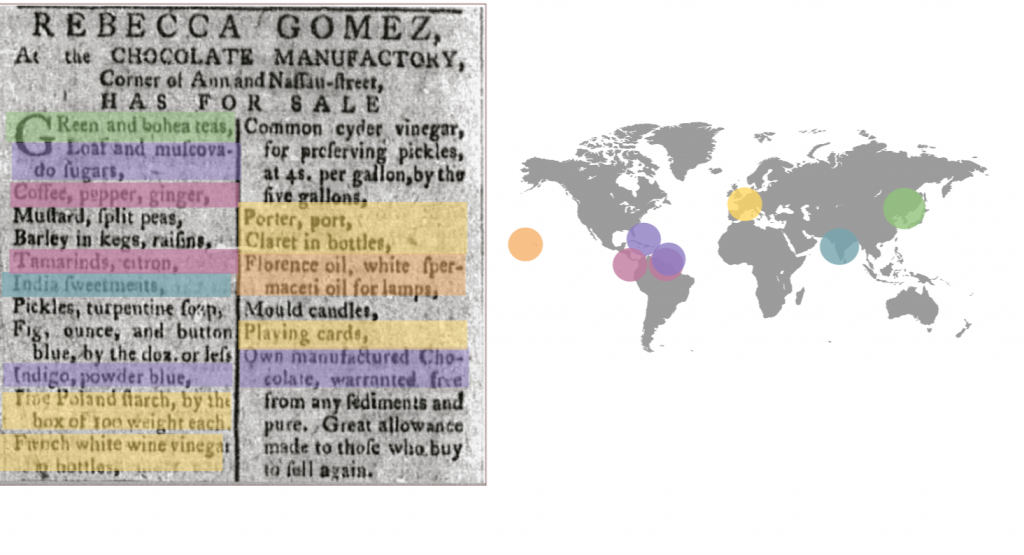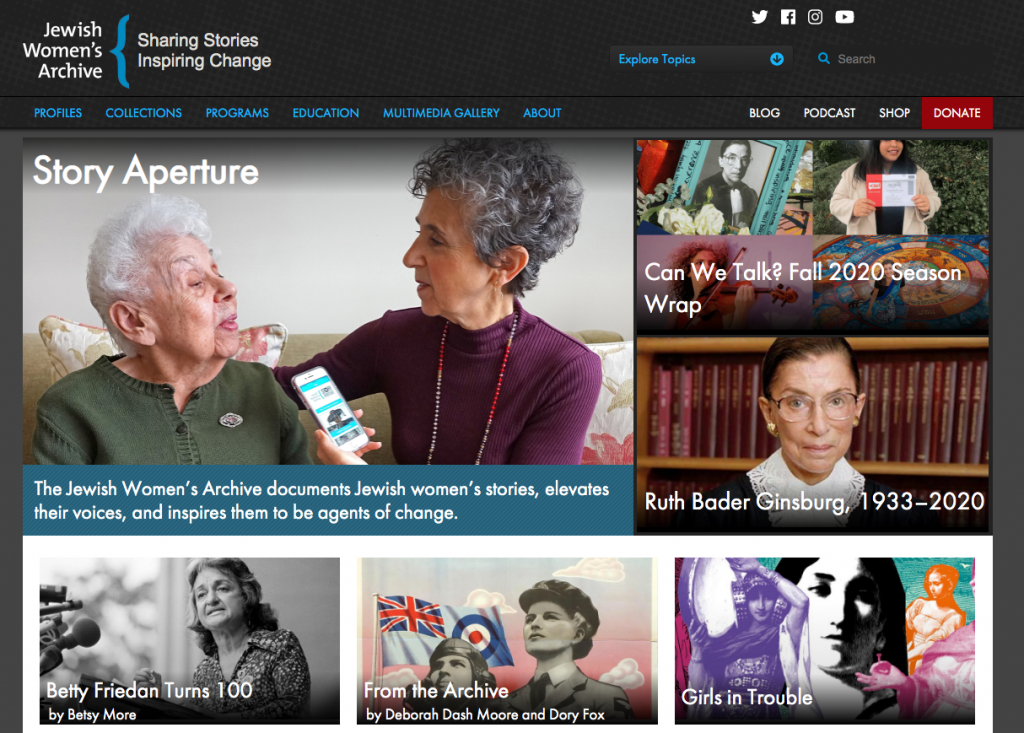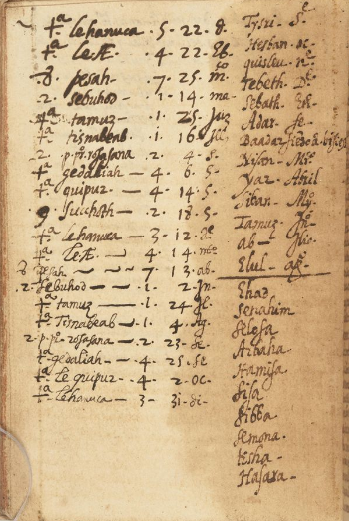Hoping people will love this 3D rendering of the Jodensavanne (Suriname) synagogue as much as I do. Below are pictures of it before it was destroyed (it is the tallest building in the town) as well as the remains today



Hoping people will love this 3D rendering of the Jodensavanne (Suriname) synagogue as much as I do. Below are pictures of it before it was destroyed (it is the tallest building in the town) as well as the remains today


The advertisement from Rebecca Gomez’s store reveals a shocking variety of places goods came from in a small town store.

Use this resource to look up the form of a poem. I haven’t added much to the Hebrew side yet, but I will continue to update it.
Hi all,
thank you for your feedback. In light of what people have said and the senate’s request, I am going to go with option #3 and make today completely asynchronous.
Rafael had asked what were the big takeaways for today. I had three main things I wanted people to get out of today’s selections:
I’d love it if people could post a comment/response to at least one of the posts on today’s readings by Hunter, Caitlin, or Jesse. Then come up with a creative response to one of today’s readings and post it as a blog post sometime between now and Monday. You are free to use your imagination, but if you get stuck, here are some ideas:
Whatever you do, don’t obsess over it or spend more than you would have being in class. Also have fun!
If you want to talk about your ideas or any of the texts, I will be hanging out during class on the usual zoom link.
best,
Laura
     |
| In case this interests anyone! It appears to be free. |
Looking for a summer gig? The English department has a list of paid opportunities.
The Jewish Women’s Archive is also looking for summer interns to do remote work in Jewish women’s history. This would be a great pair for the The Summer Opportunity Fellowship Award (SOFA), which provides funding for a student to pursue academic work with a mentor at another institution/organization for up to 10 weeks over the summer. The purpose of this program is to expose Reed students to new environments and opportunities not available on campus. This program is intended as a learning experience for the student and mentorship should be at the forefront of the project. All majors are eligible. Student stipend is $5,600 for Summer 2021. Application deadline is March 3 at 12noon. If you are interested in this, email me to start a conversation as I am on the board of the JWA and can connect you with the right people both at Reed and at the JWA!

Link to the Manuscript I mentioned today in class. Here is the calendar page:

This page is on #170 in the manuscript if you want it higher resolution or to be able to zoom.
“Luis de Carvajal the Younger (ca. 1567-1596), was the nephew of Luis de Carvajal y de Ia Cueva, the governor of Leon, Mexico. The Carvajals are the best known conversos (“New Christians”) in colonial Mexico, largely owing to Luis the Younger’s testimony at his trial before the Inquisition in 1595. He denounced more than 120 individuals as crypto-Jews–people who secretly practiced their old faith while publicly purporting to follow another faith–including members of his own family. He and many of his family were burned at the stake in 1596. These three bound documents, recently recovered after going missing from the National Archive of Mexico more than seventy-five years ago, are believed to be the only extant writings by a Jew in Mexico during the Spanish colonial period. They include Carvajal’s autobiography (written under the pseudonym Joseph Lumbroso), the principles of the faith, the Ten Commandments, and a prayer manual drawn from the Old Testament.” — brochure published for exhibition “The First Jewish Americans” at the New-York Historical Society (October 2016-March 2017).
Dear all, welcome to English 303, Jews Across the Americas! For the first day, please have read the following:
In class we will be signing up for cities. Your final project and many of your shorter assignments will involve Jewish literature and culture from this city, so take a look at the list and think about which interest you the most! We will also going over an Introduction to WordPress for those who haven’t used it before.
